The Star of Bethlehem
As I write this blog, people will be sending Christmas cards to friends and family.
Many cards will feature the Star of Bethlehem.
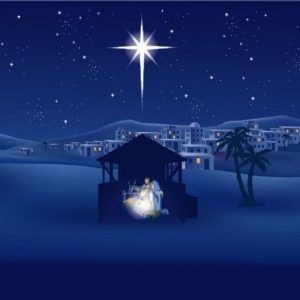
According to the gospel of St Matthew, a star guided the three wise men to the stable in which Jesus was born.
But which star was the Star of Bethlehem?
Dates
Jesus was born in the reign of King Herod.
Most scholars date the birth to around 5 or 4 BC.
In the search for the Christmas Star, scholars look at astronomical records from around this time.
The Magi
The magi, the ‘wise men’ were probably astronomers / astrologers.
They saw the night sky as a message board from the gods.
Objects and happenings in the night sky had significance for people.
The magi were the ones who could interpret events, work out their meaning.
So we can widen our search from a star to a celestial event.
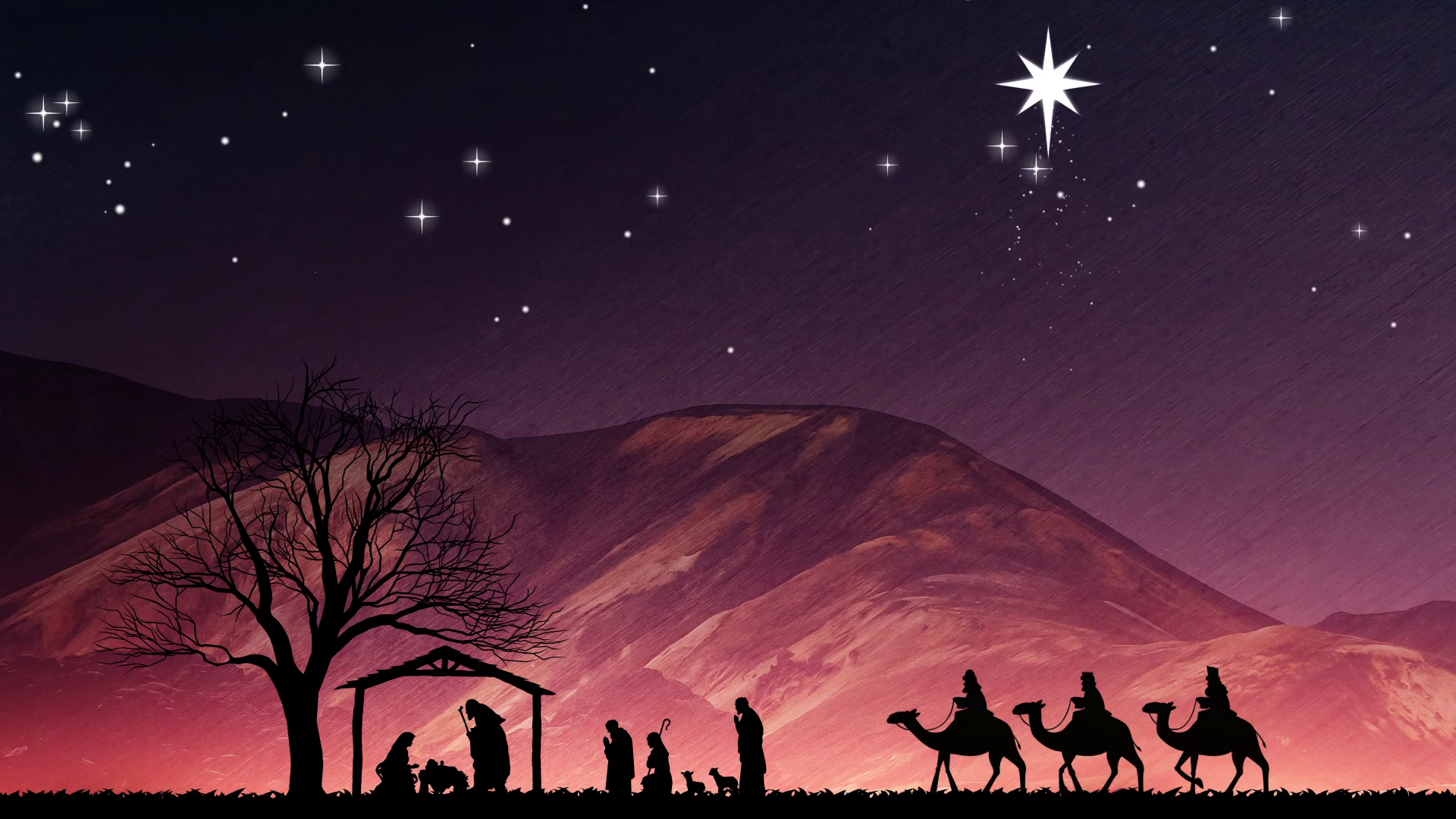
We’ll take a look at some favoured events.
Are any of them good candidates for the legendary star?
Comet
A comet seems to fit the bill in several respects.
It is a transient event.
A comet appears quite suddenly, moves across the sky and brightens, then disappears.
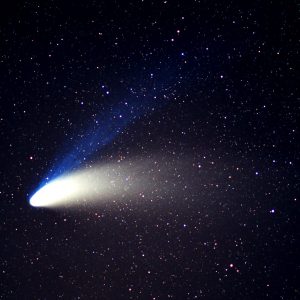
Comet Hale-Bopp
Halley’s Comet appeared around 12BC, too early for the Christmas Star.
Chinese observers possibly saw a comet around 5BC.
The timing is OK…. but there’s a problem with comets.
They were seen as ill omens.
The appearance of a comet was associated with the death of kings.
A comet would not presage the birth of one.
Supernova
A supernova is an exploding star.
Again it fits the bill in many respects.
‘Nova’ means ‘new’. In this case a new star.
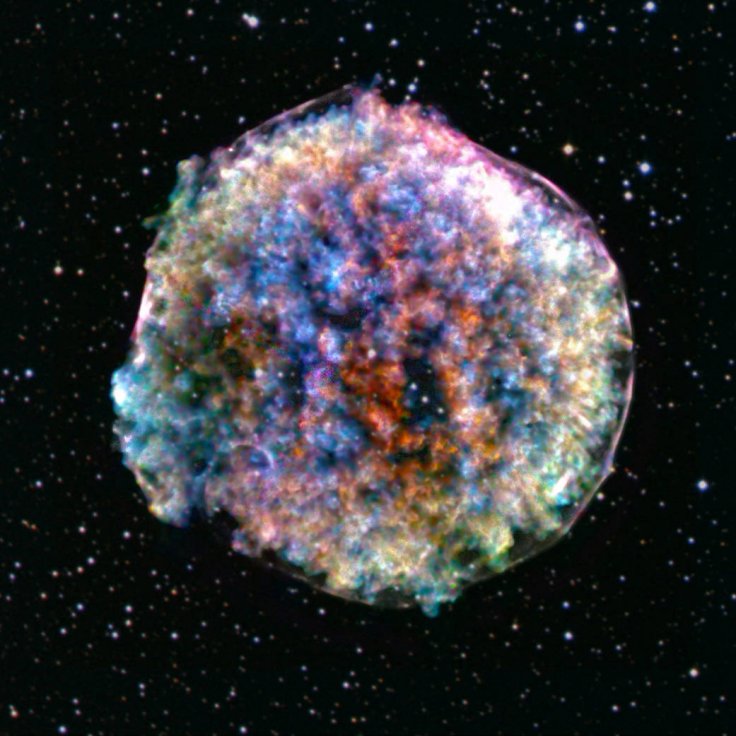
Image of the Tycho Supernova NASA/CXC/RIKEN & GSFC/T. Sato et al
In reality the star is not new.
It is simply below naked eye brightness, in practice invisible.
When it explodes, its brightness increases millions of times.
It appears as a bright new star.
Again the Chinese have a record of a possible supernova in 4BC.
However there is no western record so this explanation loses favour.
Planetary Conjunction
A conjunction is a close approach of objects in our night sky.
Such close proximity of planets would be of interest to ancient astrologers.
They would see meaning in the event.
Ordinary people would hardly notice.
There would be no record of anything really unusual.
In 7BC there was a triple conjunction of Jupiter and Saturn.
Their relative motion brought the planets close together in our sky three times over a period of months.
The first encounter might have alerted the magi to something about to happen.
The second and third conjunctions could have held the meaning, even pointed the way.
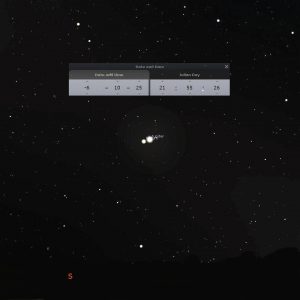
Planetary conjunction. Credit: Stellarium
In 3BC to 2BC there were conjunctions of Jupiter with Venus.
That could be too late for the birth of Jesus though some scholars do date his birth around this time.
Other conjunctions around this time involve Jupiter and Regulus.
Regulus is the bright ‘king star’ in the constellation Leo.
Jupiter is the king of planets.
Add in Venus, associated with fertility and birth, and there is astrological significance in this series of conjunctions.
So the Star of Bethlehem may not have been a bright ‘star’ at all.
A coming together of planets could have been the message that the Messiah was about to arrive.
Try your own research
You can look into the Star of Bethlehem for yourself using Stellarium.
Stellarium is wonderful planetarium software.
You can see the night sky from anywhere in the world and on any date.
So why not dial back to around 5BC in the Middle East and study the sky?
You might recreate those planetary conjunctions.
You will certainly see the sky as the magi saw it over 2000 years ago.
Not astronomical
None of these astronomical events is a convincing explanation for the Star of Bethlehem.
So what’s left?
Perhaps the ‘star’ was a supernatural event created by a supernatural deity.
Or perhaps it’s just a good story to enhance the mystique of the birth of a Messiah.

Whatever, enjoy the depictions of the star on your seasonal cards.
And from me and the Wonderdome team, have a very merry Christmas!
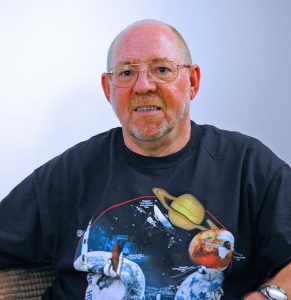
The author: Dennis Ashton is a Fellow of the Royal Astronomical Society and a Wonderdome presenter.
Would you like to hear more Astronomy news?
Do you want to to find out about our upcoming public events?
Follow WonderDome Portable Planetarium on Twitter and Facebook or go to our web site wonderdome.co.uk

